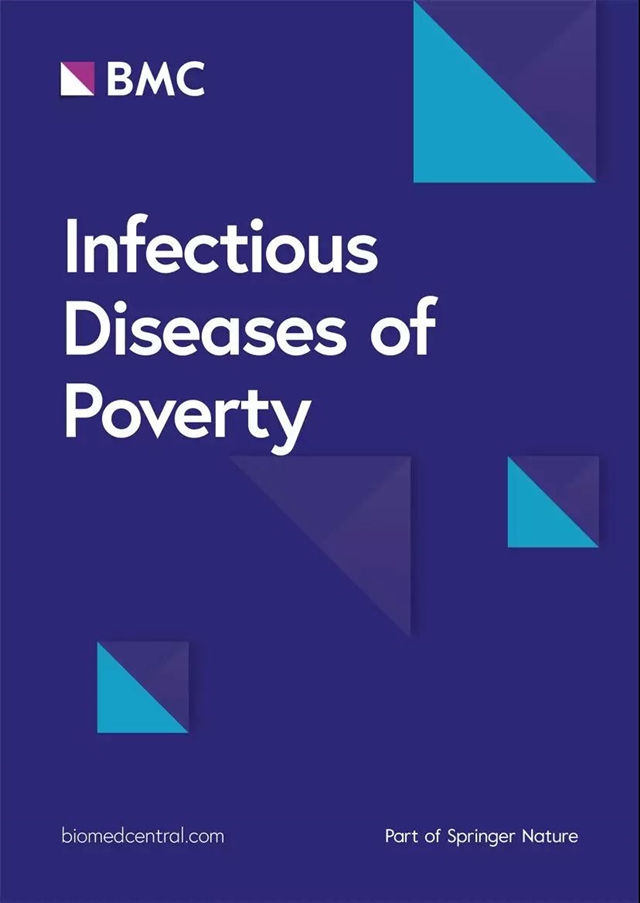The abundance of snail hosts mediates the effects of antagonist interactions between trematodes on the transmission of human schistosomes
IF 5.5
1区 医学
Q1 INFECTIOUS DISEASES
引用次数: 0
Abstract
Combating infectious diseases and halting biodiversity loss are intertwined challenges crucial to ensure global health. Biodiversity can constrain the spread of vector-borne pathogens circulation, necessitating a deeper understanding of ecological mechanisms underlying this pattern. Our study evaluates the relative importance of biodiversity and the abundance of Bulinus truncatus, a major intermediate host for the trematode Schistosoma haematobium on the circulation of this human pathogen at aquatic transmission sites. We combined mathematical modelling and a molecular based empirical study to specifically assess the effect of co-infections between S. haematobium and other trematodes within their B. truncatus snail hosts; and B. truncatus abundance at transmission sites, on the production of S. haematobium infective cercariae stages released into the aquatic environment. Our modelling approach shows that more competitive trematode species exploiting B. truncatus as an intermediate host at the transmission site level leads to higher co-infection rates within snail hosts, subsequently reducing the production of S. haematobium cercariae. Conversely, an increase in B. truncatus abundance results in lower co-infection rates, and a higher proportion of S. haematobium cercariae released into the environment. Our empirical data from the field support these findings, indicating a significant negative effect of local trematode species richness (P-value = 0.029; AIC = 14.9) and co-infection rates (P-value = 0.02, AIC = 17.4) on the dominance of S. haematobium based on our GLMM models, while B. truncatus abundance positively influences S. haematobium dominance (P-value = 0.047, AIC = 20.1). Our study highlights the importance of biodiversity in influencing the transmission of S. haematobium through the effect of antagonistic interactions between trematodes within bulinid snail hosts. This effect intensifies when B. truncatus populations are low, promoting co-infections within snails. In line with the One Health concept, our results suggest that maintaining high level of freshwater biodiversity to sustain global trematode diversity at transmission sites can help reducing the circulation of Schistosoma species locally.蜗牛宿主的丰富性介导了吸虫之间的拮抗相互作用对人类血吸虫传播的影响
防治传染病和遏制生物多样性丧失是相互交织的挑战,对确保全球健康至关重要。生物多样性可以限制病媒传播的病原体循环传播,因此有必要深入了解这种模式背后的生态机制。我们的研究评估了生物多样性和Bulinus truncatus(血吸虫的主要中间宿主)的丰度对这种人类病原体在水生传播地点的循环的相对重要性。我们结合数学建模和基于分子的实证研究,具体评估了血吸虫和其他吸虫在其Bulinus truncatus螺宿主体内的共同感染,以及Bulinus truncatus在传播地点的丰度对释放到水生环境中的血吸虫感染性carcariae阶段的产生的影响。我们的建模方法表明,在传播地点,更多具有竞争力的吸虫物种利用B. truncatus作为中间宿主,会导致蜗牛宿主体内的共感染率升高,从而减少血吸虫蚴的产生。相反,B. truncatus 数量的增加会导致共感染率降低,释放到环境中的 S. haematobium 蚴的比例增加。我们的实地经验数据支持这些发现,根据我们的 GLMM 模型,当地吸虫物种丰富度(P 值 = 0.029;AIC = 14.9)和共感染率(P 值 = 0.02,AIC = 17.4)对血吸虫的优势地位有显著的负面影响,而 B. truncatus 的丰度对血吸虫的优势地位有正面影响(P 值 = 0.047,AIC = 20.1)。我们的研究强调了生物多样性在影响血吸虫传播方面的重要性,它是通过吸虫在球螺宿主体内的拮抗作用产生的。当B. truncatus种群数量较少时,这种影响会加剧,从而促进蜗牛内的共同感染。与 "同一健康 "理念一致,我们的研究结果表明,在传播地点保持高水平的淡水生物多样性以维持全球吸虫多样性,有助于减少血吸虫在当地的传播。
本文章由计算机程序翻译,如有差异,请以英文原文为准。
求助全文
约1分钟内获得全文
求助全文
来源期刊

Infectious Diseases of Poverty
Medicine-Public Health, Environmental and Occupational Health
CiteScore
16.70
自引率
1.20%
发文量
368
审稿时长
13 weeks
期刊介绍:
Infectious Diseases of Poverty is a peer-reviewed, open access journal that focuses on essential public health questions related to infectious diseases of poverty. It covers a wide range of topics and methods, including the biology of pathogens and vectors, diagnosis and detection, treatment and case management, epidemiology and modeling, zoonotic hosts and animal reservoirs, control strategies and implementation, new technologies, and their application.
The journal also explores the impact of transdisciplinary or multisectoral approaches on health systems, ecohealth, environmental management, and innovative technologies. It aims to provide a platform for the exchange of research and ideas that can contribute to the improvement of public health in resource-limited settings.
In summary, Infectious Diseases of Poverty aims to address the urgent challenges posed by infectious diseases in impoverished populations. By publishing high-quality research in various areas, the journal seeks to advance our understanding of these diseases and contribute to the development of effective strategies for prevention, diagnosis, and treatment.
 求助内容:
求助内容: 应助结果提醒方式:
应助结果提醒方式:


